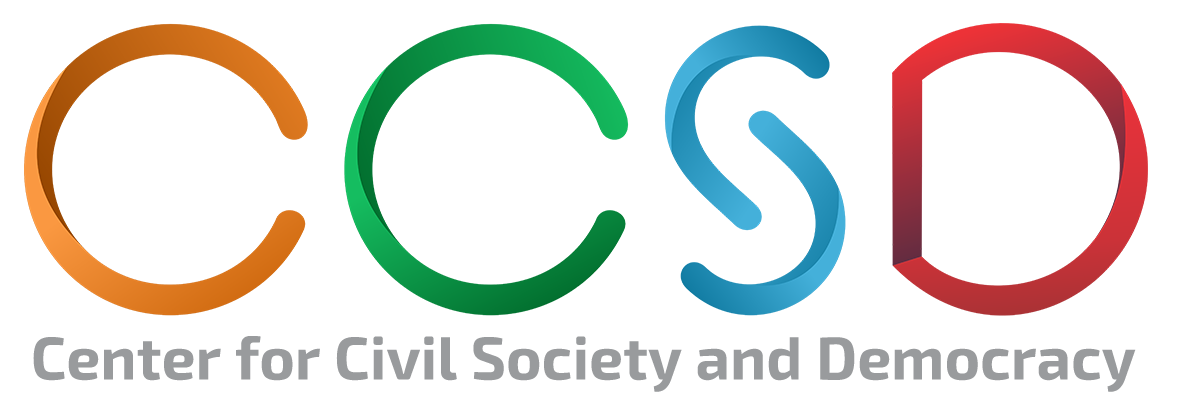Although we now hear guns more than peaceful chants in Syria, and while the news of armed rebellion overshadows discussion of nonviolent resistance, a subtle everyday survival activism performed by civic groups, especially women, keeps the movement alive.
“The day I left prison, I got invited to attend a memorial service for one of those who were killed by the regime in Syria. Everyone started chanting my name the minute I entered the venue. They were thousands, and they treated me like a hero. It was a moment that I will never forget. I never felt more connected to my people”.
Rima, the 40 year old Syrian writer who now lives in exile, didn’t really ask for a leadership role in the early nonviolent struggle in Syria. Her passion was always fighting for women’s rights, as well as advocating against honor killing and corruption. But beginning in March 2011, she found herself among thousands of other Syrians fighting through social media or on the streets for a bigger cause – democracy in Syria.
Syrian women have played an important role in nonviolent protests when the Syrian uprising began. But as the conflict turned violent, men and their guns came to dominate the struggle. And with the advent of armed insurgent groups like the Free Syrian Army and the Syrian Liberation Army, stories of civil resistance in Syria, like Rima’s story, have been submerged.
Today, many say that the role of women in the Syrian uprising has diminished as the struggle has become militarized. Others believe the role of women in struggle is taking a different shape – an auxiliary role in keeping the resistance strong. In any case, there is a need to better understand the challenges which women faced while engaged in nonviolent resistance before the struggle was steered toward violent insurrection. This reflection can help to identify ways for the nonviolent resistance to remain a positive influence in the country.

Nonviolent resistance persists despite brutality
Mai, a woman scout leader from Damascus, was one of the peaceful resisters who still remains in Syria. She started her actions by gathering together with several men and women and organizing peaceful protests, using tools like balloons, signboards and leaflets to attract more people. Mai and her colleagues believed strongly in the virtue of citizenship, and they wanted to promote it through legal actions. They applied to the authorities for a permit to organize demonstrations to challenge the restrictive law on public gatherings. They went through a lot of bureaucracy and paperwork and finally succeeded and secured the necessary permissions. However, when they held their peaceful protest in Damascus, they were immediately attacked by the police even though the demonstrators were holding the protest permit in their hands.
Despite violence, we continue reading the stories of “Daryya’s Free Women Group”, nicknamed the “Spray women”. These women sprayed messages on the walls of their neighborhoods and towns, aiming to unify residents around nonviolent resistance. Some of these messages read, “Remember that we went out first for the rule of law” and “the revolution passed through here”.
We also hear about a brave woman who in August 2011 began documenting the names of people who were killed by the regime in Syria. She searched systematically for their personal stories, inquired with people about their hopes and dreams, in a mission to document the sacrifices of ordinary people for future generations. These examples demonstrate that a repressive environment and violent reactions to peaceful acts, although creating a formidable challenge, cannot douse the spirit of women in resistance.
Protecting the movement
Many women activists in Syria are aware of the enduring damage that the armed conflict is inflicting on Syrian society. This is why many of them have shifted their energy towards building a strong civil society rather than just organizing protests. Nuha was among many women who volunteered for organizations inside Syria. ”We try to empower civil society and to give it a voice” she says. “I am personally afraid of the power and money that the radical Islamist groups are acquiring in the course of this revolution. This radical ideology is very foreign to our society as a whole, and it’s threatening Syria’s future”.
Many Syrian female activists chose to be involved in activities that crisscross civil society and politics. Katherine, a lawyer and a human rights activist is involved in building community organizations from the bottom up in Syria, which she and several other women activists are trying to do. Their work focuses on instilling the culture of self-management of local communities through an informal network of people and institutions.
Although we now hear guns more than peaceful chants in Syria, and while the news of armed rebellion overshadows discussion of nonviolent resistance, an everyday survival activism performed by civic groups, especially women, keeps the movement alive, and this is done in a much more subtle way than overt protests and demonstrations.
This article is based on field research conducted by Rajaa Altalli, senior advisor at the Center for Civil Society and Democracy in Syria, and Dr. Anne-Marie Codur. who holds a Ph.D. in Economics and Sustainable Development from Institut d’Etudes Politiques de Paris and was a post-doctoral fellow at Harvard University
Taken from the following website :http://www.opendemocracy.net/civilresistance/nada-alwadi/voices-of-syrian-women-in-civil-resistance
Center For Civil Society And Democray In Syria | CCSDS
